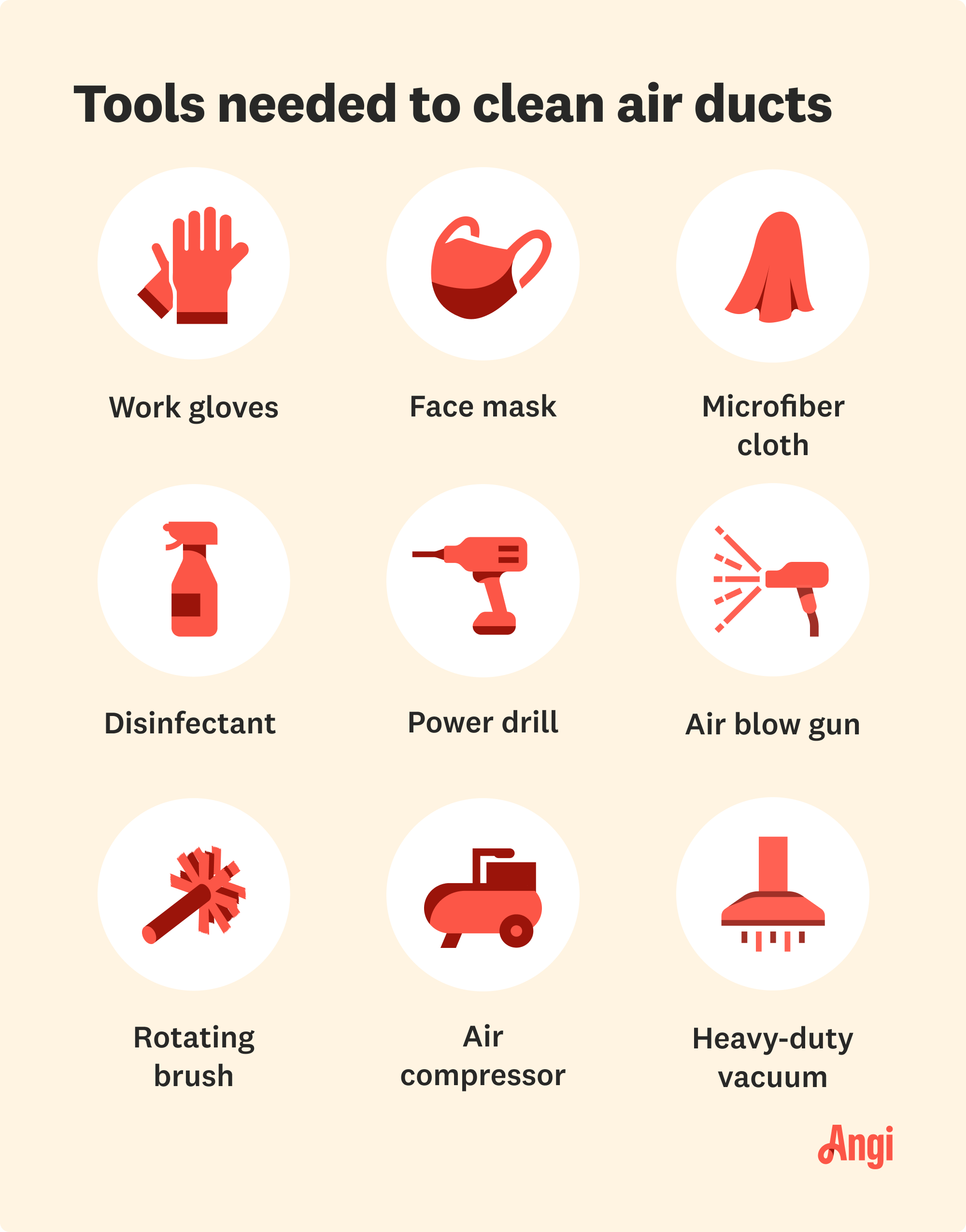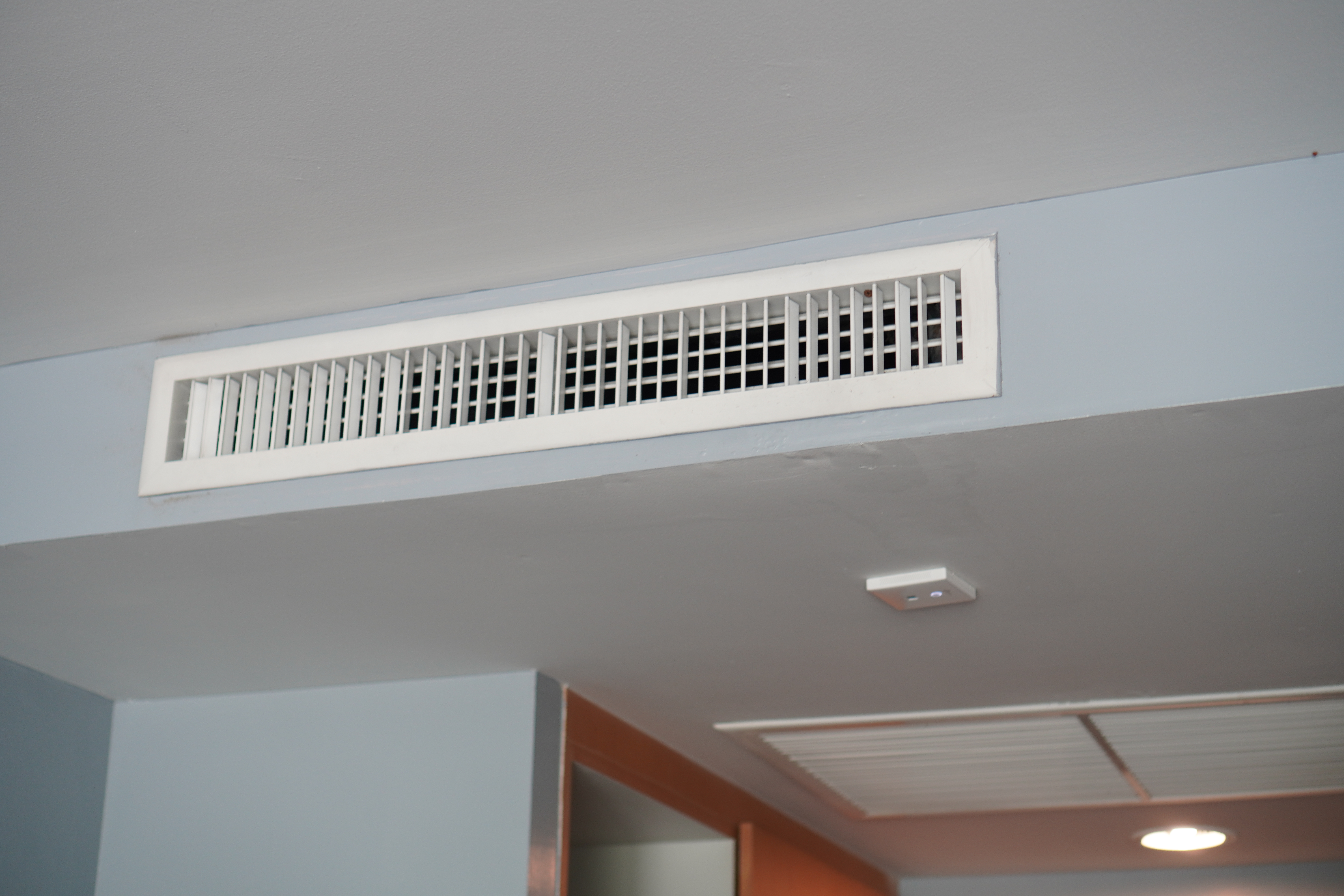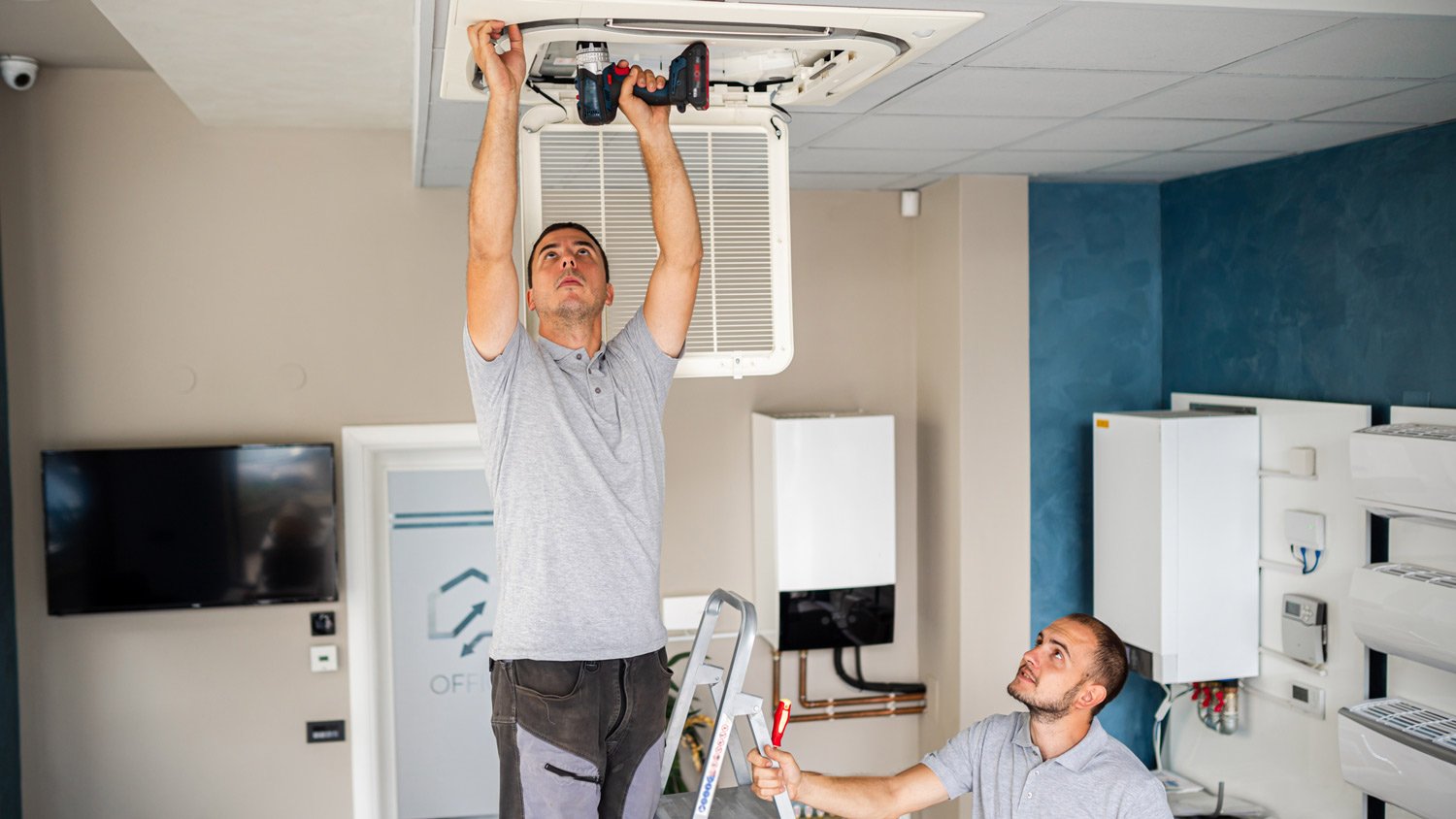
Whole-house air purifier costs depend on a variety of factors, including your home’s size and layout. The type of purifier you choose matters, too.
It may be time to freshen up your HVAC system


Hiring a professional duct cleaner ensures a deep clean that may extend the life of your HVAC.
There are different types of duct cleaning chemicals suited for different purposes.
It is best to use products recommended by your HVAC system and to only use EPA-registered products for safety.
Mechanical methods of cleaning don’t typically use harsh chemicals.
Nothing makes your home feel cleaner and healthier than fresh air. A big part of indoor air quality is having a clean HVAC system. Over time, dust, bacteria, and even mold can accumulate in your air ducts, impacting airflow and posing potential health concerns. Understanding the best duct cleaning chemicals for use in your home ensures effectiveness without compromising air quality.
Air duct cleaning takes an average of five to seven hours for most households. You can make the job go quicker by removing any obstacles around your HVAC entry points, like furniture, to make it easier for your pro to access the ducts.
First, check with your HVAC manufacturer for product suggestions. Second, always prioritize your safety by using EPA-approved products. Additionally, there may be non-chemical solutions for your specific issue.
Work with a local air duct cleaning service through the whole process. They can determine the best options for your dwelling and will complete the service safely without damaging your ductwork or leaving behind a mess. Pros have the expertise necessary to improve indoor air quality while extending the life of your HVAC unit.
Not all duct cleaning products are the same—each serves a specific purpose. Some target bacteria and viruses to sanitize your HVAC system, while others tackle mold growth or lingering odors. Choosing the right one depends on your needs.
Yes, dirty air ducts can make you sick. Sanitizers and disinfectants are ideal for microbial control, combatting bacteria, viruses, or fungi sprouting in your ducts. Homeowners will find sprays for this purpose sold at home improvement stores. However, according to the EPA, using only product designers for HVAC is essential. Recommended options include:
EPA-registered disinfectants, like SNiPER, are eco-friendly and hospital-grade disinfectants and deodorizers.
Hydrogen peroxide-based cleaners are effective against mold and bacteria while being relatively safe for indoor air.
Quaternary ammonium compounds (Quats) are commonly used for antimicrobial treatment but should be applied carefully to avoid overuse.
If mold is present in your ductwork, the only solution is specialized treatment by dedicated mold remediation specialists. Standard cleaning won’t permanently remove mold spores, so pros use the following chemicals based on your specific situation:
Sodium hypochlorite is bleach-based and requires proper ventilation to remove dangerous fumes.
Concrobium mold control is a non-toxic alternative that encapsulates and eliminates mold, typically without harmful fumes, making it safer.
Enzyme-based cleaners are eco-friendly, work by breaking down mold naturally, and are safer for long-term use.
Let's face it: Older HVAC systems can develop musty or stale odors over time, especially when dirt, dust, and debris accumulate. Deodorizers help refresh the air and prevent lingering smells. Recommended chemicals often include:
Glycol-based deodorizers absorb and neutralize odors in ductwork.
Activated carbon sprays help trap and remove airborne odor molecules.
Essential oil-based sprays can provide a natural, chemical-free option to improve air freshness.
If you are a homeowner who prefers a chemical-free approach to duct cleaning, there are highly effective options that do not use harsh substances. These methods focus on mechanical removal, natural sanitization, and odor control.

The most straightforward way to clean ducts without chemicals is by physically removing dust and debris.
HEPA HVAC vacuums: Professionals use vacuums to capture fine particles like dust, pollen, and allergens, stopping them from circulating throughout your home.
Rotary brush systems: Experts use these tools to loosen dirt and buildup inside the ductwork, making it easier to remove contaminants without using chemical cleaners.
Ultraviolet (UV-C) light is a powerful tool for disinfecting air ducts without chemicals. These systems will:
Kill mold and bacteria by breaking down the DNA of microbes, preventing them from reproducing.
Sanitize indoor air continuously when installed inside the duct system, working 24/7 to keep indoor air clean as it circulates.
The average cost to clean your air ducts is roughly $390, though prices can vary between $150 and $800. Remember, air ducts are the first defense for filtering out impurities before breathing. A good cleaning will eliminate the buildup of dust and debris that happens over time.
From average costs to expert advice, get all the answers you need to get your job done.

Whole-house air purifier costs depend on a variety of factors, including your home’s size and layout. The type of purifier you choose matters, too.

Curious about air duct cleaning costs? Get insights into pricing factors, benefits, and how to tell when it’s time for a good cleaning.

Can flexible air ducts be cleaned? Yes, but you need to make sure you don't damage it. In many cases, it's best to hire a pro to clean your ductwork.

Air duct sanitizing removes bacteria, viruses, and pathogens from ductwork to help reduce the risk of getting sick from your home’s air.

Air duct cleaning is a service for homes affected by mold, pests, or excess dust. Use this guide to find a good air duct cleaning company.

While tipping air duct cleaners isn’t a customary practice, and isn’t required, there may be some instances where a little cash can go a long way.